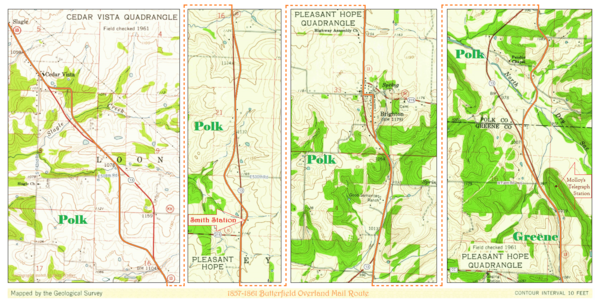Brighton, Missouri facts for kids
Brighton is a small place in southern Polk County, Missouri, in the United States. It's called an unincorporated community. This means it's a group of homes and businesses that isn't officially a town or city with its own local government.
You can find Brighton where two main roads meet: Missouri Route 13 and Missouri Route 215. It's about eleven miles north of Bolivar and fifteen miles south of Springfield.
Contents
About Brighton, Missouri
Brighton is part of the larger Springfield Metropolitan Statistical Area. This is a way to describe a big city and all the smaller towns and communities around it that are connected. Think of it like a big neighborhood that includes Springfield and its nearby areas, including Brighton.
Location and Roads
Brighton is easy to find because it sits right at the intersection of two important state roads.
- Missouri Route 13 is a major highway that runs north and south through this part of Missouri.
- Missouri Route 215 is another state road that crosses Route 13 right in Brighton.
Being at this crossroads helps people travel to and from Brighton easily.
What is a ZIP Code?
Every place in the United States has a special number called a ZIP Code. For Brighton, this code is 65617. A ZIP Code helps the post office sort mail and deliver it to the correct address. It's like a special address number just for mail delivery.
History of Brighton
Brighton has been around for a long time. It has a history that goes back to the mid-1800s.
The First Post Office
A post office was opened in Brighton way back in 1852. This was an important step for the community. A post office meant that people could send and receive letters and packages more easily. It helped the community grow and connect with other places.
How Brighton Got Its Name
The community of Brighton got its name from a place far away. Many of the first people who settled in this area came from a town called Brighton, Tennessee. They decided to name their new home in Missouri after the place they came from. It was a way to remember their roots and where they grew up.


